Respect in Every Thread: How to Honor Veterans Through What You Wear
Learn how to wear veteran shirts respectfully in 2025. Discover proper patriotic clothing etiquette to honor military service with pride and authenticity.

Blog Post Contents
You bought a veteran support shirt. Now you're wondering: Will someone think I'm disrespectful? Could I get accused of stolen valor?
The truth: Most veterans appreciate your support far more than you realize. The anxiety you feel about how to wear veteran shirts respectfully comes from misunderstanding one key distinction—the difference between showing support and claiming service you didn't earn.
This guide gives you clear rules based on your relationship to the military. You'll know exactly what you can wear, what to avoid, and how to respond if someone questions you. No complicated customs to memorize—just honest guidance on etiquette for patriotic clothing that actually makes sense.
Understanding the Basics: Support vs. Stolen Valor
Stolen valor is fraud. It's lying about military service or awards for personal gain—like claiming to be a Navy SEAL on a job application, wearing medals you didn't earn to get veteran discounts, or fabricating combat stories for respect. The Stolen Valor Act prosecutes FALSE CLAIMS about service, not clothing choices.
Showing support is protected speech. The First Amendment lets you wear military-themed apparel. A "Support Our Troops" t-shirt isn't a service claim—it's appreciation. Patriotic clothing falls under the same constitutional protections as any other speech.
The line is simple: Are you trying to deceive people into thinking you served when you didn't? That's stolen valor. Are you wearing a shirt because you appreciate military sacrifice? That's support, and it's legal and welcomed.
What Actually Constitutes Stolen Valor
Let me be specific. Stolen valor includes: Putting "Navy SEAL" on your resume when you weren't one, wearing a Silver Star you didn't earn, creating fake discharge papers for VA benefits, verbally claiming combat experience you don't have.

NOT stolen valor: Wearing an "Army Strong" support shirt as a civilian, putting on a generic military cap, displaying patriotic clothing with flags and eagles, wearing vintage military surplus you bought at a thrift store, sporting a 22 Kill campaign shirt.
The law requires intent to deceive for personal benefit. A civilian wearing a veteran support shirt at the grocery store isn't claiming to be a veteran—they're showing appreciation. No deception, no fraud.
Understanding this eliminates 90% of your anxiety about wearing military apparel.
The Support Spectrum: Where You Fall
Different relationships to the military have different expectations:
Pure civilian support: No military connection. You appreciate service and want to honor it.
Family connection: Parent, spouse, sibling, or child served. You inherit some connection to their service.
Almost served: Signed papers but never went to basic, failed medical exams, or washed out of boot camp. This is the most sensitive category.
Veterans: You served but didn't reach 20 years for retirement. You earned full rights to wear any military apparel from your service.
Military retirees: 20+ years service. You have even broader rights, including wearing actual uniforms in many circumstances.
Knowing your category helps you make appropriate choices.
Etiquette for Patriotic Clothing: Who Can Wear What
Civilians with No Military Connection
What you CAN wear confidently:
- Generic branch support ("Army Strong," "Navy Pride," "Support Our Troops")
- Campaign shirts (22 Kill, Honor The Contract, Combat Flip Flops, Mission 22)
- Patriotic designs (flags, eagles, "Freedom Isn't Free")
- Cause-specific shirts (veteran suicide prevention, PTSD awareness, POW/MIA)
What to AVOID:
- Unit-specific shirts (75th Ranger Regiment, SEAL Teams, specific battalions)
- Shirts with rank insignia or "Veteran" status claims
- First-person military slogans ("I served in hell")
- Anything resembling actual uniform components
If someone asks: Simple honesty works. "I didn't serve, but I support veterans" or "I didn't serve, but this funds suicide prevention programs." Most veterans will thank you for the support.
Reality check: Most veterans appreciate civilian support more than civilians realize. Generic support apparel bothers almost no one.
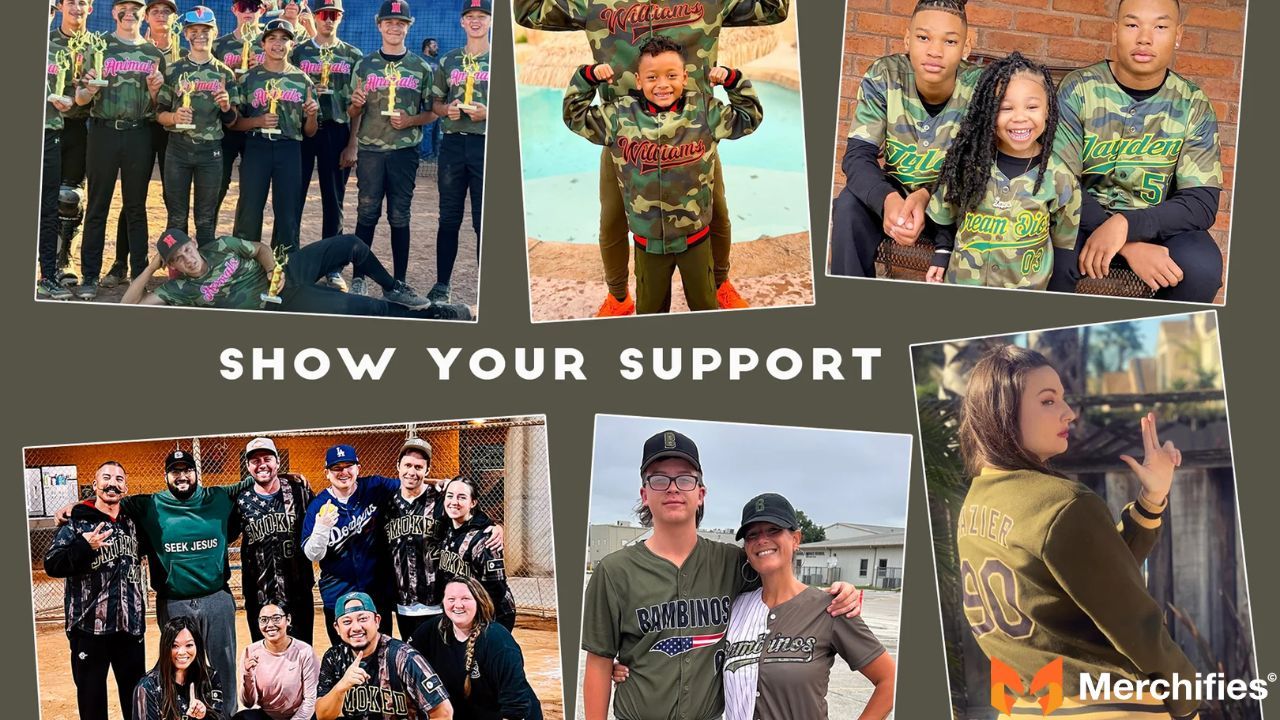
Military Family Members: Special Rules
What military families CAN wear:
- Parent's/spouse's unit shirts with context ("Army Daughter," "My Dad Served 3 Tours")
- Branch-affiliated apparel with family relationship clear
- Inherited clothing from veteran family members
- Unit reunion shirts when attending family events
The age factor: Young children need no explanation—obviously they didn't serve. Military age (18-35)? Be ready to immediately clarify: "This was my father's unit." Older family members are generally understood as family connections.
Inherited clothing carries special meaning. Your grandfather's WWII jacket, your father's unit shirt, your brother's Marine Corps hoodie—these honor family legacy. Most veterans respect families who wear inherited military clothing. Keep the name tag if it has one, and explain the connection when asked: "This was my grandfather's jacket. He served in the Pacific Theater."
The clarification rule: When approached, immediately explain your connection. Don't let people assume YOU served if you didn't. "My mom served in this unit for 20 years" solves everything.
Veterans and Retirees: What You've Earned
If you served, you have full rights to wear any military-affiliated apparel from your service. Period. No restrictions beyond basic courtesy.
Wear your unit's shirt. Wear your branch's apparel. Wear deployment-specific clothing. You earned these rights. Don't fall into the "humble veteran trap" where you avoid military apparel because you're worried about looking boastful.
Inter-service respect: An Army veteran wearing a "Navy Pride" shirt shows solidarity across branches. Most veterans appreciate this. However, wearing another branch's elite unit shirt when you weren't in that unit feels questionable. Stick with your own service's specialized units.
The "almost served" category deserves mention: People who started but didn't complete service should exercise maximum caution. The veteran community views incomplete service as not earning the affiliation right. If you fall here, stick with generic patriotic support that doesn't claim branch affiliation.
The Gray Areas: Context Matters
Vintage Military Clothing and Surplus
The military sold surplus to civilians for decades. Wearing vintage military gear as fashion is acceptable, especially WWII/Korea-era pieces.
Fashion context separates appreciation from impersonation. A vintage field jacket with jeans and sneakers reads as fashion. The same jacket with military boots and cargo pants looks like you're trying to appear military.
Historical distance matters. A 75-year-old WWII piece is clearly vintage. A jacket from recent conflicts feels more sensitive because those veterans are still young and active.
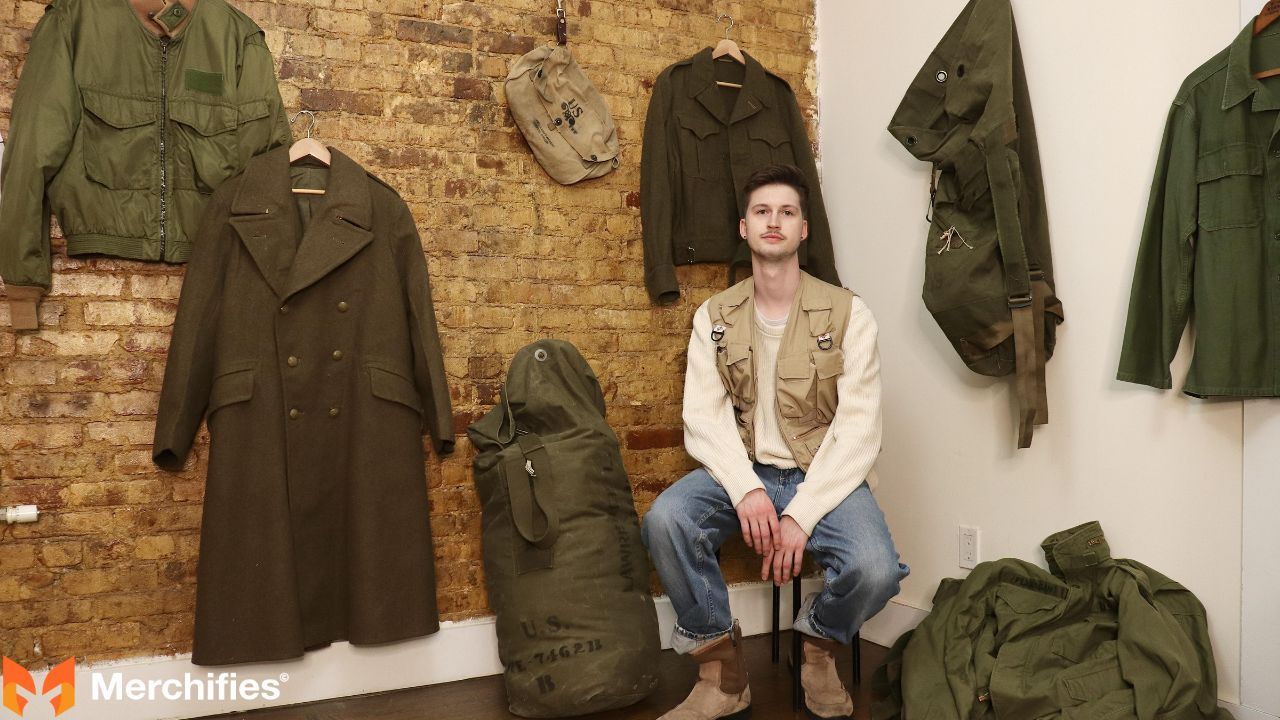
What crosses the line: Complete uniform ensembles that look like impersonation, adding fake insignia to vintage pieces, claiming the clothing represents YOUR service.
What stays appropriate: Single vintage pieces mixed with civilian clothing, treating items as historical artifacts, being honest when asked about your vintage piece.
Camouflage Patterns
Camo divides opinion. Some veterans strongly believe civilians shouldn't wear any camo—period. Others don't care because camo is mainstream fashion.
Generic camo patterns (woodland, digital) have crossed into fashion territory. Hunting clothing, streetwear, outdoor gear—camo appears everywhere in civilian contexts.
Military-specific patterns (current-issue MARPAT, MultiCam) carry more sensitivity. Wearing them where you could be mistaken for military creates problems.
Context determines appropriateness. Camo while hunting? Normal. Full camo outfit at a shopping mall? Trying too hard to look military. Single camo piece with civilian clothing? Acceptable to most veterans.
Simply wearing camo isn't stolen valor. It's pattern, not claim.
Unit-Specific and Elite Unit Apparel
Not all military units carry equal sensitivity. A hierarchy exists:
Generic branch apparel = Lowest sensitivity. "Army" or "Marines" shirts rarely generate questions.
Division/base-specific shirts = Moderate sensitivity. People might assume you or a family member served there.
Elite unit shirts = Maximum sensitivity. Navy SEALs, Army Rangers, Special Forces—these units require extraordinary selection. Members feel protective of their qualifications. A civilian wearing a SEAL shirt invites questioning.
Family exception applies: "My father was 75th Ranger" with immediate clarification satisfies even protective unit members.
For civilians with no connection: Stick with generic branch support unless you enjoy explaining yourself frequently.
Legal Boundaries: What You Actually Can't Wear
10 U.S. Code 772: Uniform Wear
Federal law governs when non-active duty people can wear military UNIFORMS. Notice the word: uniforms. This law doesn't cover veteran t-shirts or casual military apparel.
Who can wear actual uniforms: Guard/Reserve members (when authorized), retired officers (uniform of their grade), honorably discharged within 3 months traveling home, veterans who served in wartime (when President authorizes), actors in films, VA home residents.
Everyone is absolutely prohibited from wearing uniforms: In political/commercial activity, during civilian employment, at rallies/protests (unless authorized), in situations bringing discredit, in court, at anti-government events.
Why this matters for t-shirts: These rules govern actual UNIFORMS, not casual military apparel. A veteran wearing a unit t-shirt isn't wearing a uniform. A civilian wearing "Army Strong" isn't violating federal law.
The distinction is critical. Many people fear wearing veteran support shirts because they heard "civilians can't wear military clothing." That's true for uniforms. It's completely false for t-shirts and casual apparel.
Medals, Ribbons, and Awards
Here the law gets strict. The Stolen Valor Act prohibits wearing medals or decorations you didn't earn.
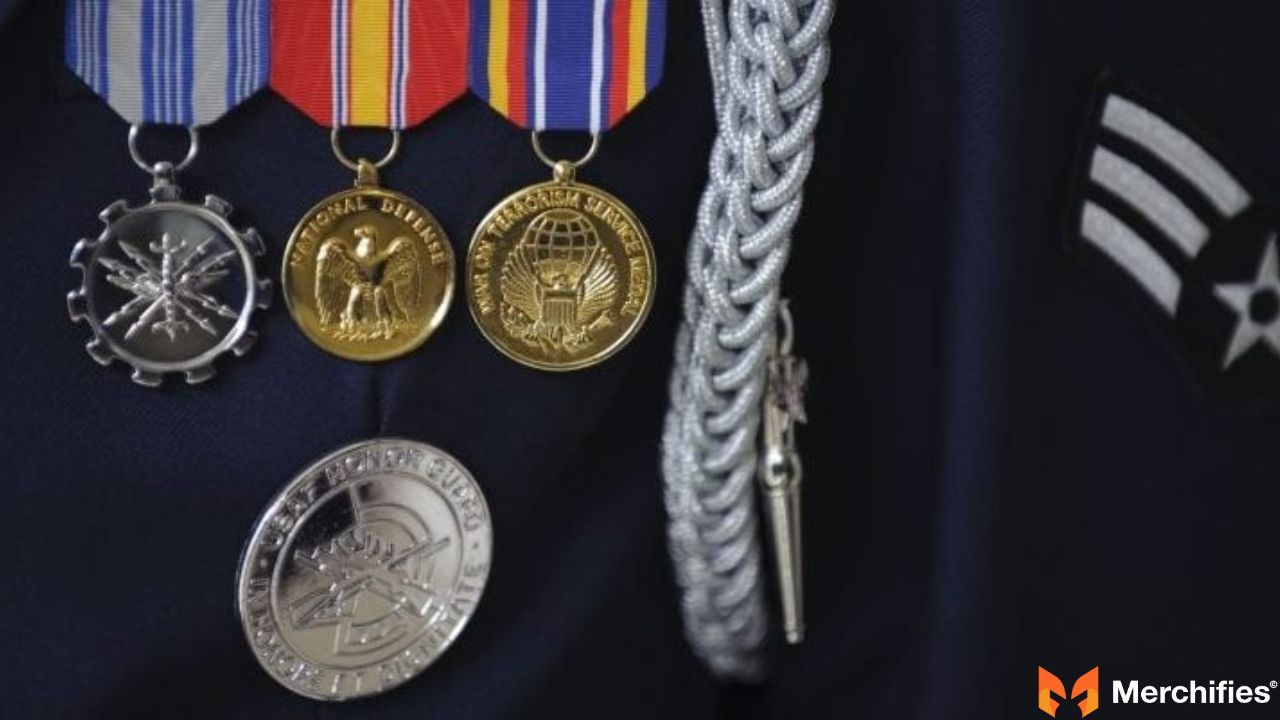
What's forbidden: Wearing someone else's actual medals (even deceased relatives'), displaying military awards on clothing when you didn't earn them, falsely claiming medal awards verbally.
What's allowed: Displaying family members' medals in shadow boxes (not wearing them), wearing t-shirts with medal graphics (images, not actual medals).
Why this rule is strictest: Medals represent specific acts of valor and sacrifice. Medal of Honor recipients paid the highest prices. Purple Hearts mean wounds received in service. When someone wears unearned medals, it deeply offends the military community.
If you inherit a family member's medals, frame them. Display them. Tell the stories. Don't wear them as though you earned them.
Real Veteran Opinions: What Actually Bothers Them
The gap between civilian anxiety and veteran reality is enormous. I've talked to hundreds of veterans about this. The overwhelming majority—80%+—appreciate civilian support regardless of form.
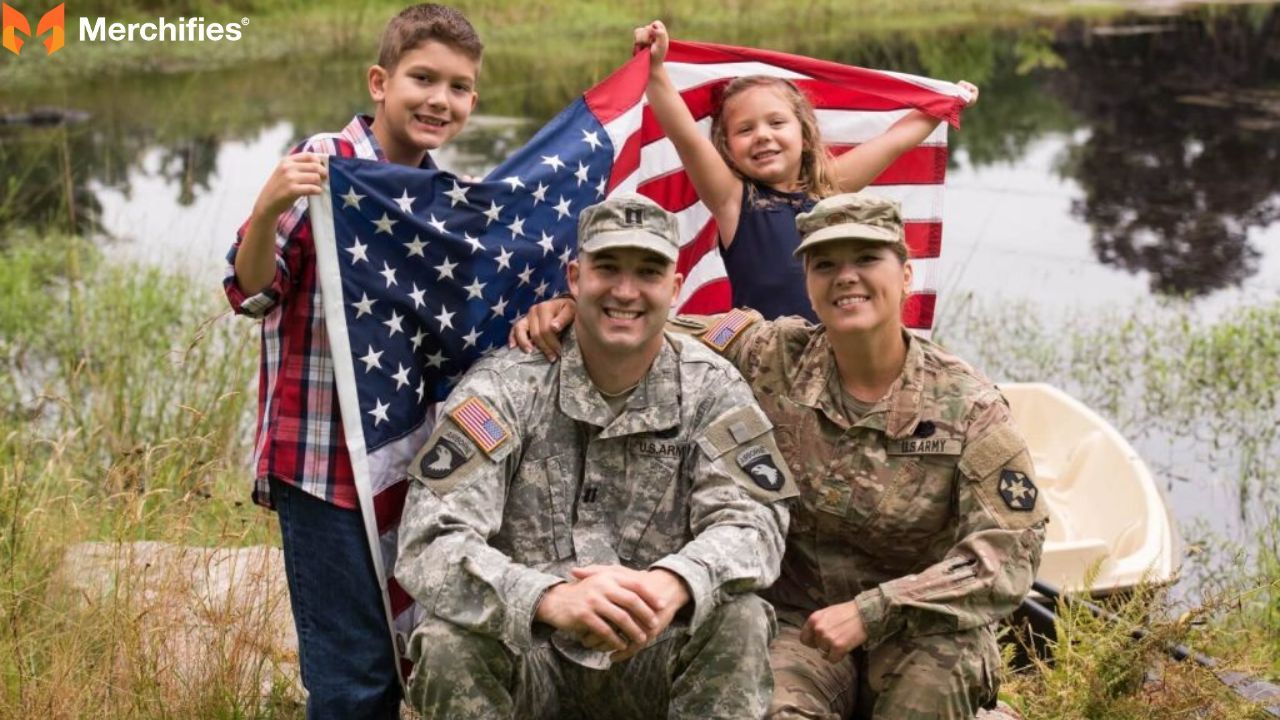
The Support Appreciation Factor
Common veteran responses: "I appreciate that you care," "Thanks for the support," "I don't care what you wear as long as you're not claiming you served."
The core message: Honesty matters more than what you wear. If you're genuine and truthful when asked, most veterans give you grace.
Generational divide exists: Vietnam-era veterans show more sensitivity—they served when society disrespected them. Post-9/11 veterans are more relaxed—they're accustomed to visible civilian support. WWII veterans appreciated any recognition at all.
Why do civilians worry more than veterans care? Media amplification. Viral videos of confrontations get millions of views. Thousands of daily positive interactions never make news. You're seeing the extreme minority and mistaking it for common opinion.
What Actually Does Offend Veterans
Near-universal offense:
- Verbally claiming service you didn't perform
- Wearing unearned medals
- Disrespecting the flag while wearing military apparel
- Using military affiliation for commercial fraud
Commonly offensive:
- Wearing elite unit shirts with no connection and refusing to explain
- Poor behavior while wearing military clothing (arrests, public intoxication)
- "Almost served" people exaggerating their connection
Rarely offensive (despite civilian fears):
- Generic support t-shirts
- Family members wearing unit apparel
- Vintage military surplus as fashion
- Patriotic clothing showing appreciation
The respect test: If your intention is genuine respect and you're honest when questioned, most veterans extend grace even if you make etiquette mistakes.
Practical Scenarios: Real Situations
Scenario 1: Civilian Buying First Support Shirt
Best choices: Campaign shirts (22 Kill, Honor The Contract), generic branch support ("Support Our Troops"), cause-specific shirts (suicide prevention, PTSD awareness).
Avoid: Elite unit logos, rank insignia, "Veteran" status claims.
If questioned: "I didn't serve, but I support veterans and this funds suicide prevention."
Purchase wisely: Buy from veteran-owned companies or campaigns that fund veteran causes.
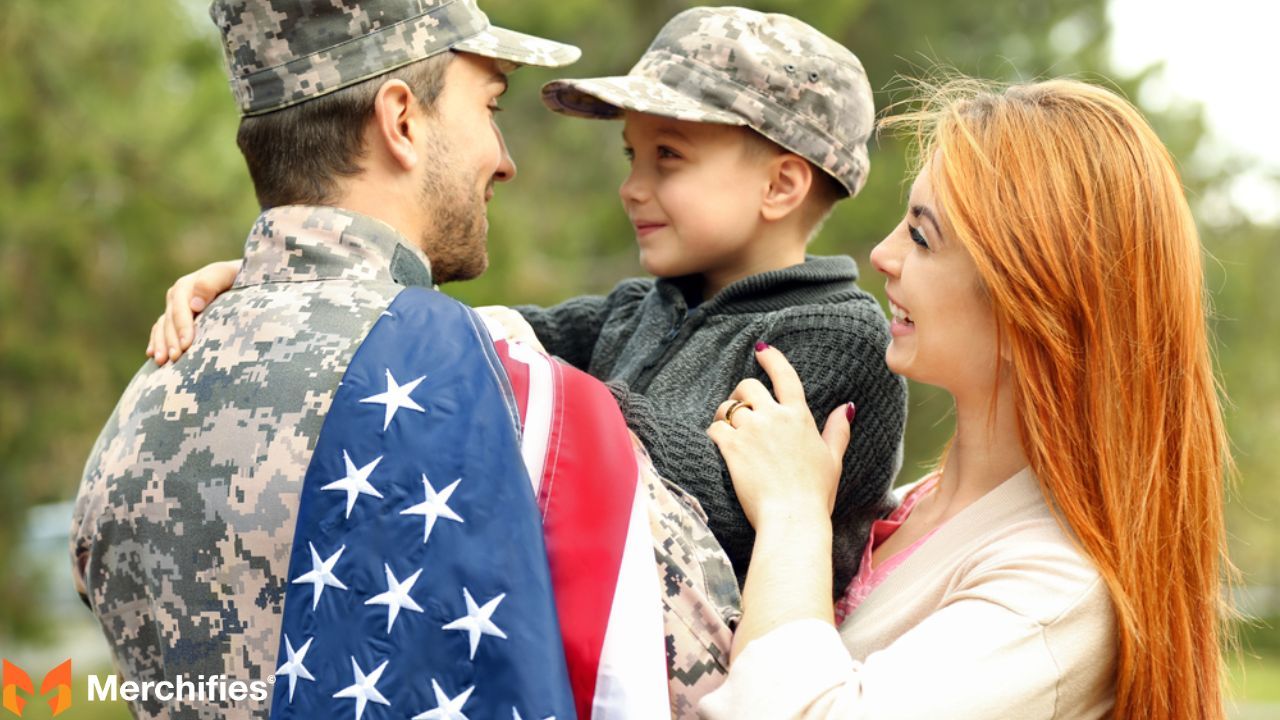
Scenario 2: Military Kid Wearing Parent's Unit Shirt
Elementary age: Wear freely. Obviously you didn't serve.
Middle/high school: Be ready to explain "My dad served in this unit."
College age: Consider shirts with clarifying text like "Army Daughter."
If questioned: Proud, clear response—"This is my father's unit. He deployed twice."
Scenario 3: Veteran Wearing Old Unit Shirt to Gym
Reality check: You earned it. Wear it.
Don't fall into the humble veteran trap. Your service matters. Wearing a shirt acknowledging it doesn't make you arrogant.
Practical benefit: You'll connect with fellow veterans who recognize your unit.
Scenario 4: Inherited Grandfather's WWII Jacket
Veteran community response: Generally respected. Families honoring relatives by wearing inherited military clothing is appreciated.
Best practice: Keep the name tag. When asked: "This was my grandfather's jacket. He served as a B-17 pilot."
Treat the jacket respectfully. Don't wear it where it could get damaged.
When Someone Questions You
The Polite Inquiry: "Did You Serve?"
Most questions come from curiosity, not accusation.
If you didn't serve: "No, but I support veterans." Or "No, this is my father's unit—he served 20 years."
Tone matters. Don't get defensive. Just state your connection clearly.
Follow-up option: "Did you serve?" This shifts conversation into shared interest.
Likely outcome: Friendly conversation, possibly making a friend.
The Accusatory Challenge
Rare but intimidating. Someone aggressively challenges your apparel.
Stay calm: "You're right, I wasn't. I'm showing support" or "This was my dad's unit."
Don't engage if hostile: Walk away. You don't owe anyone a debate.
If wearing something inappropriate: "I didn't realize. Thanks for letting me know."
Remember: Most veterans don't confront people. Those who do aggressively are often dealing with their own issues. Don't take it personally.
The Curious Non-Veteran
Someone asks what your shirt means. Pure opportunity.
Explain the cause: "This supports veteran suicide prevention. The campaign raised awareness that 22 veterans die by suicide daily."
Share why it matters: "I didn't serve, but veteran suicide prevention is important to me because..."
Best outcome: Your shirt becomes a conversation starter about veteran issues. You've increased awareness.
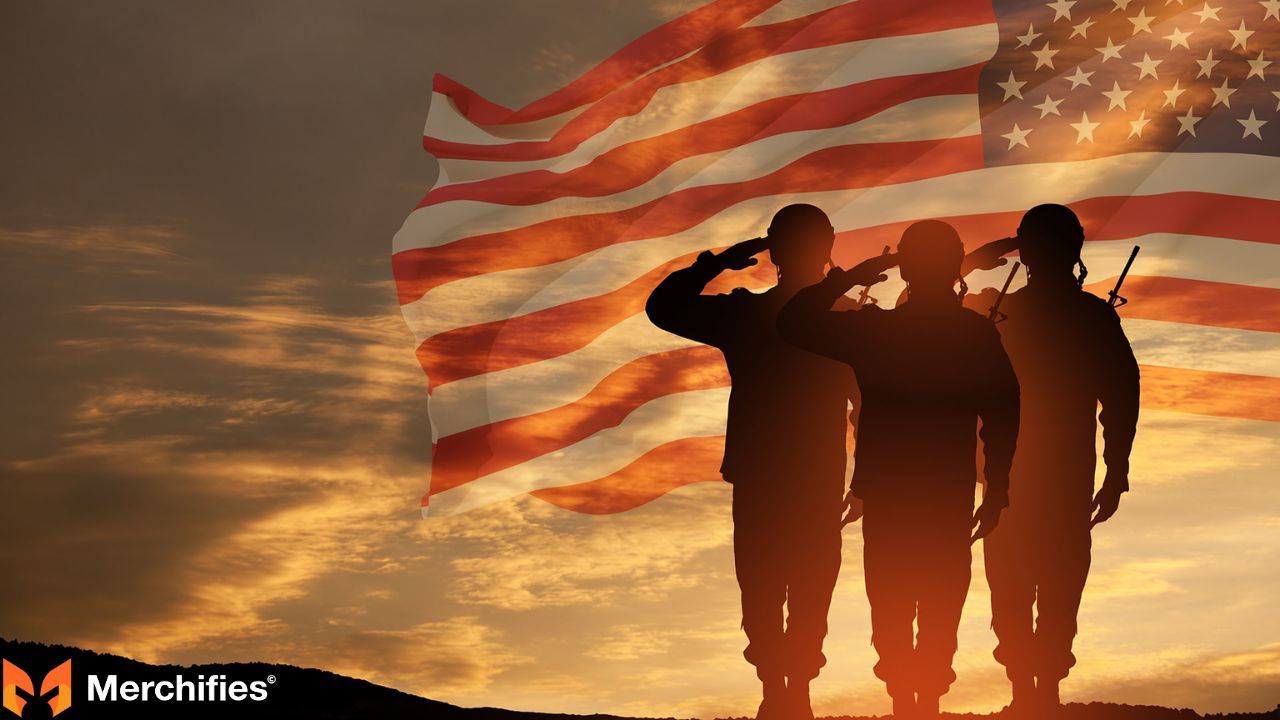
Frequently Asked Questions
How do you wear veteran shirts respectfully if you're a civilian?
Choose generic support designs (not unit-specific), be honest when questioned ("I didn't serve, but I support veterans"), and purchase from veteran-owned brands or campaigns funding veteran causes. Avoid rank insignia, "Veteran" claims, or elite unit logos. Most veterans appreciate civilian support more than civilians realize.
What is the etiquette for patriotic clothing?
Wear military-themed apparel to appropriate settings (patriotic holidays, casual outings, veteran events). Avoid situations bringing discredit (political rallies, bars where you might misbehave). Be truthful if questioned about your connection. Pair patriotic clothing with respectful behavior.
Can I wear my dad's military unit shirt?
Yes. Military family members can wear relatives' unit shirts with clarification. When asked, immediately explain: "This was my father's unit—he served 20 years." Most veterans appreciate families honoring their relatives' service.
Is wearing military apparel stolen valor?
No. Stolen valor requires fraudulent CLAIMS of service or awards for personal gain. Simply wearing military-themed clothing is protected speech. The distinction is between what you WEAR (generally protected) and what you CLAIM (potentially illegal if fraudulent).
What military apparel should civilians avoid?
Avoid elite unit shirts (SEALs, Rangers, Special Forces), rank insignia, "Veteran" status claims, uniform components, first-person military slogans, and actual medals. Stick with generic support designs and campaign shirts.
Can I wear camouflage if I'm not military?
Yes. Camo is mainstream fashion in hunting, streetwear, and outdoor gear. Avoid current-issue military patterns (MARPAT, MultiCam) where you could be mistaken for active military. Generic camo with civilian clothing is widely accepted.
How should I respond if a veteran questions my shirt?
Respond with honest clarity: "I didn't serve, but I support veterans" or "This is my father's unit." Stay calm—most questions come from curiosity. If hostile, walk away. Honesty and respect handle almost all situations.
Can I wear vintage military clothing from a surplus store?
Yes. The military sold surplus to civilians for decades. Mix vintage military items with civilian clothing to signal fashion, not impersonation. Be honest if asked about the piece's origin. Avoid complete uniform ensembles.
Conclusion
Understanding how to wear veteran shirts respectfully isn't complicated—it's about genuine appreciation, honest communication, and appropriate context. Etiquette for patriotic clothing emphasizes purpose over perfection.
The real rule is simple: Be honest when questioned. Your truthfulness matters infinitely more than which shirt you chose. Support veterans genuinely. Purchase from brands giving back to the community. And wear your support confidently, knowing most veterans appreciate you caring enough to show it visibly.